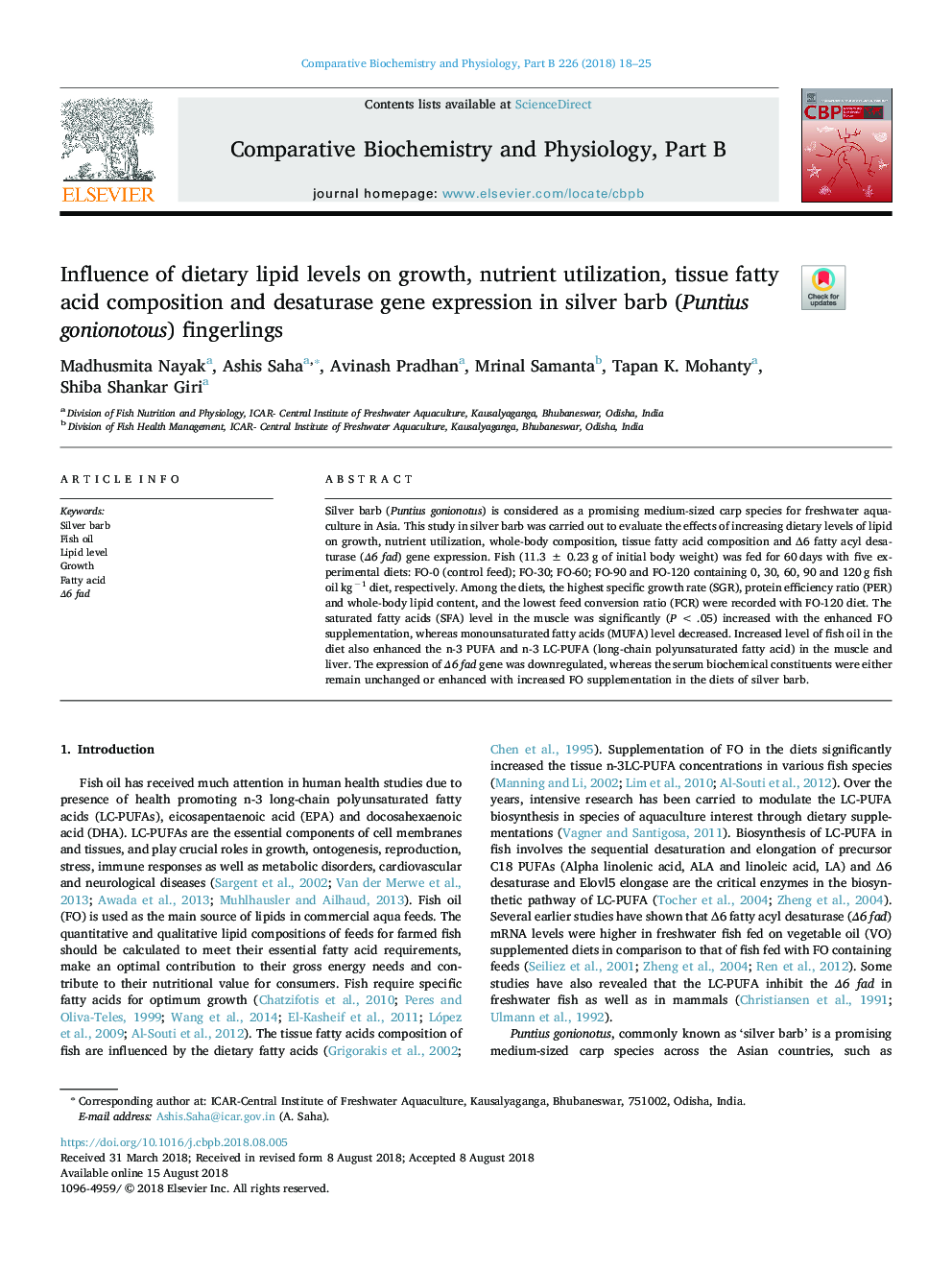| Article ID | Journal | Published Year | Pages | File Type |
|---|---|---|---|---|
| 8943686 | Comparative Biochemistry and Physiology Part B: Biochemistry and Molecular Biology | 2018 | 8 Pages |
Abstract
Silver barb (Puntius gonionotus) is considered as a promising medium-sized carp species for freshwater aquaculture in Asia. This study in silver barb was carried out to evaluate the effects of increasing dietary levels of lipid on growth, nutrient utilization, whole-body composition, tissue fatty acid composition and Î6 fatty acyl desaturase (Î6 fad) gene expression. Fish (11.3â¯Â±â¯0.23â¯g of initial body weight) was fed for 60â¯days with five experimental diets: FO-0 (control feed); FO-30; FO-60; FO-90 and FO-120 containing 0, 30, 60, 90 and 120â¯g fish oil kgâ1 diet, respectively. Among the diets, the highest specific growth rate (SGR), protein efficiency ratio (PER) and whole-body lipid content, and the lowest feed conversion ratio (FCR) were recorded with FO-120 diet. The saturated fatty acids (SFA) level in the muscle was significantly (Pâ¯<â¯.05) increased with the enhanced FO supplementation, whereas monounsaturated fatty acids (MUFA) level decreased. Increased level of fish oil in the diet also enhanced the n-3 PUFA and n-3 LC-PUFA (long-chain polyunsaturated fatty acid) in the muscle and liver. The expression of Î6 fad gene was downregulated, whereas the serum biochemical constituents were either remain unchanged or enhanced with increased FO supplementation in the diets of silver barb.
Keywords
Related Topics
Life Sciences
Biochemistry, Genetics and Molecular Biology
Biochemistry
Authors
Madhusmita Nayak, Ashis Saha, Avinash Pradhan, Mrinal Samanta, Tapan K. Mohanty, Shiba Shankar Giri,
